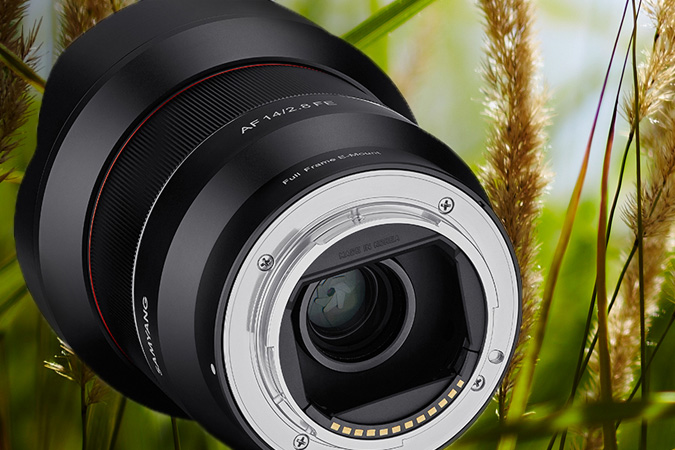
Designed specifically for Sony’s E-mount system, this wide and fast prime provides an incredible viewing angle of 113.9 degrees when used on a full-frame sensor and 89.8 degrees when shot on an APS-C sensor.
The lens comprises 14 elements in 10 groups. This includes three aspherical elements, two extra-low dispersion elements, and generous amounts of lens coatings for minimal chromatic aberration and minimal light dispersion.
What sets this lens apart from every lens Samyang has ever offered is its autofocus capabilities. For the first time in 40 years, Samyang has introduced a lens designed to work with both phase detection and contrast detection autofocus systems. At the time of announcement, no information has been shared by Samyang as to what type of motors are used within the autofocus system.
The metal lens weighs in at 17.8 ounces (505 grams) with both front and rear caps attached, is 3.8 inches (98mm) in length, and 3.4 inches (86mm) in diameter. The minimum focusing distance of the Samyang AF 14/2.8 FE is 7.9 inches (20cm), which should make for some impressive bokeh when used with the seven blade aperture diaphragm.

The lens is set to be released in September 2016 with a retail cost of 700 euros in the European market. No specific price has been mentioned for the U.S. market when it hits shelves, but we will update you when that happens.
Editors' Recommendations
- New Rokinon AF 75mm f/1.8 FE is light in weight, and probably price
- Nikon’s new Z mount 70-200mm f/2.8 lens is not quite ready for prime time
- Sigma’s Art series continues trek into mirrorless lenses with new 24-70mm f/2.8


